Unlike other dehydrated foods like ramen or pre-seasoned dehydrated rice, beef jerky is naturally dehydrated and is safe to consume in this state. However, jerky can become too dry and hard if the bag or Tupperware container in which you store it is left open. However, there are ways to add a little moisture to your jerky while also allowing you to try out various textures and food pairings. We’ll go over various techniques for softening beef jerky.
Jerky can be used in a variety of recipes in addition to being a popular snack for people who go on long hikes or a flavorful treat for road trips. Nearly all dehydrated foods, especially those that are prepared with seasonings and salt, can add a lot of flavor to your meals, but since jerky is so high in protein, it can also increase the dish’s nutritional value.
Why is My Beef Jerky Hard?
Wondering why your beef jerky got too hard?
The process used to make beef jerky is what provides the solution. Typically, strips of beef are soaked in a mixture of salt, water, and spices (usually things like black pepper, garlic powder, or onion powder) to create beef jerky.
In addition to making the meat more tender, this procedure also stops bacteria from growing.
The meat is then put in a dehydrator, oven, or smoker after it has been soaked, where the temperature is carefully controlled on the dehydrator trays.
The objective is to keep the cooked meat edible for the dishes you want to use it in while removing as much moisture as possible.
But the meat can turn hard and brittle if the temperature rises too much or it isn’t properly dried. Additionally, the meat may become tough if it wasn’t given enough time to soak in the brine solution.
Therefore, your best option if you find yourself with a bag of hard beef jerky is to simply throw it away and start over with a new batch.
Can You Really Rehydrate Jerky? Is It Possible?
Yes, it’s possible to rehydrate jerky. It can be heated in the microwave, sautéed, or even dipped in soup or liquid.
There are a number of ways to reintroduce the succulent, meaty flavor of jerky, depending on whether you want to cook it with just a little moisture or fully soften it.
Method #1: The Microwave Method
Jerky can be quickly and easily rehydrated in the microwave without having to wait. But be mindful that you are rehydrating it while leaving it in the microwave.
You run the risk of burning it if you dehydrate it in the microwave, which would force you to give it to one, two, or three willing golden retrievers.
Step 1: Put the dry jerky and a small glass or bowl of water into a microwave-safe bowl. Without sealing it, place the lid over the top and microwave it for one minute.
Step 2: Fill the container containing the jerky with a small bowl of water.
In addition to or instead of the bowl of water, you can also wet a paper towel, wring out all the excess water, and place it in the container. Alternatively, you can moisten a paper towel, making sure the entire towel is moist, and place it over the jerky:
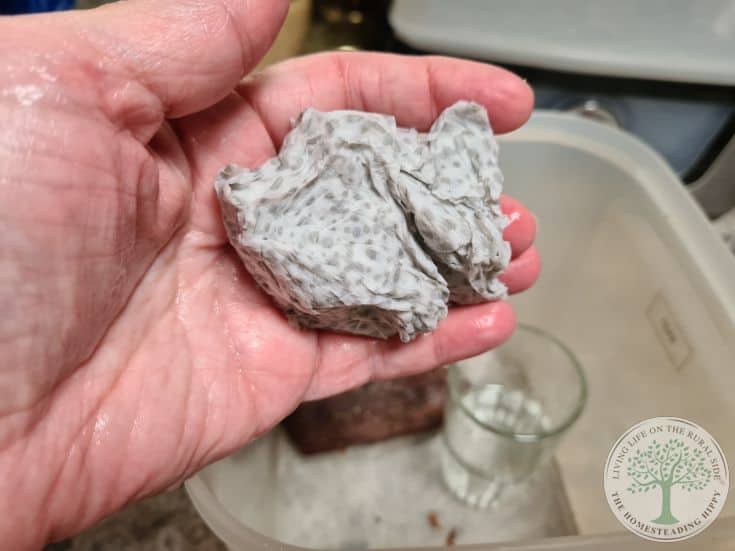
(If you do it this way, exercise extreme caution because the paper could overheat and burn. ).
Before putting a paper towel in the microwave-safe container with the jerky, wet it and squeeze all the water out of it.
Step 3: Cover the container with the lid but do not seal it:
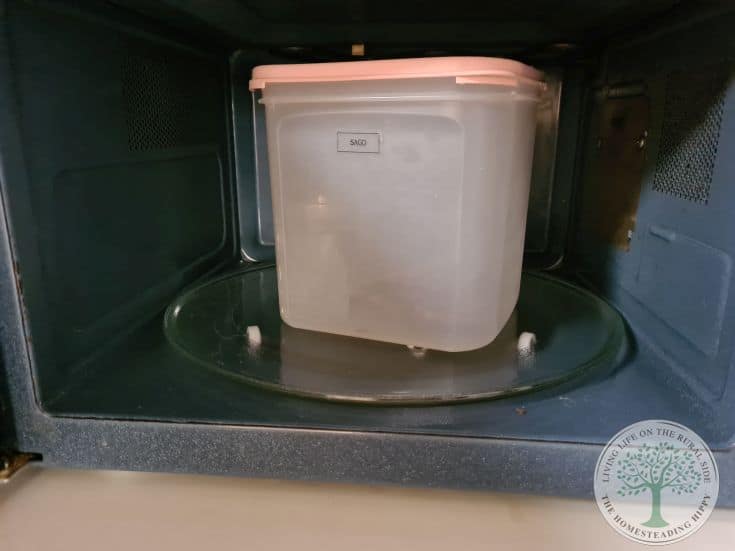
Step 4: In the microwave, heat the food for 1 minute at a time, stirring after each interval, until moistened to taste.
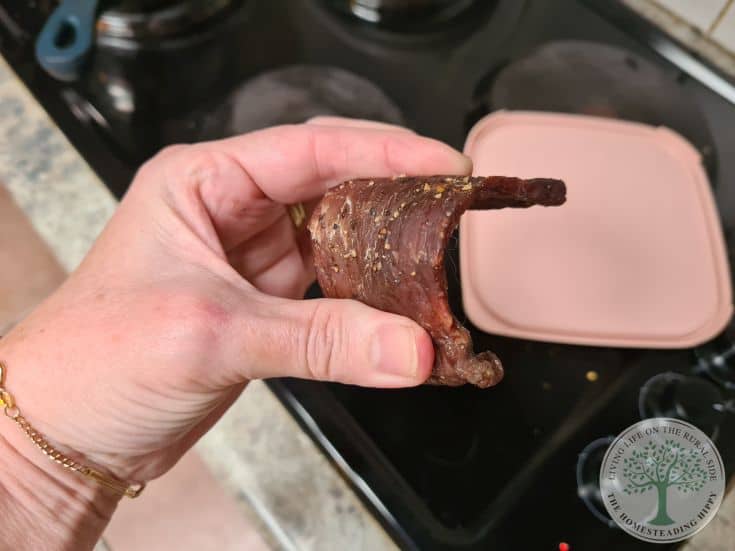
If you wait too long to eat the moistened jerky, it will dry out even more quickly than it did the first time.
When cooking your jerky, sautéing it is a great way to add moisture or prepare it as a meal.
Doing it is as easy as this:
Sliced onions are first placed in a frying pan.
Step 2: Add your jerky.
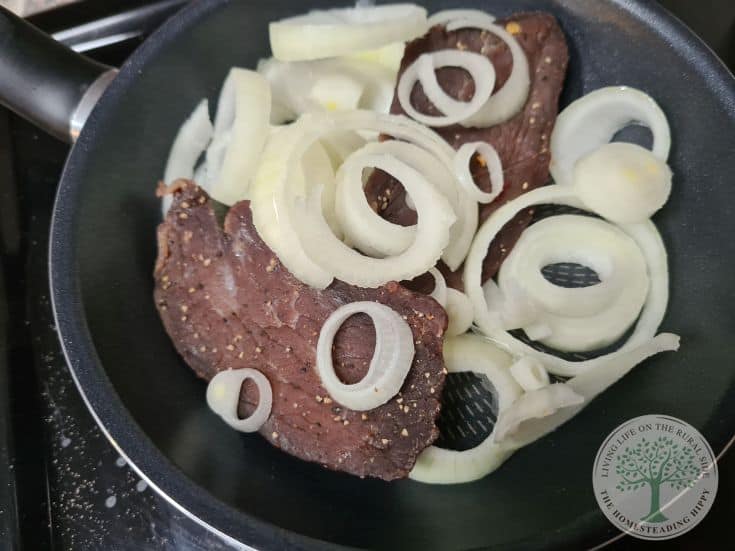
Step 3: Put on a lid that doesn’t completely seal the pan.
Step 4: Wait 30 seconds, then flip the dried meat. Wait another 30 seconds.
Step 5: Take the meat off the heat when it is as tender as you prefer.
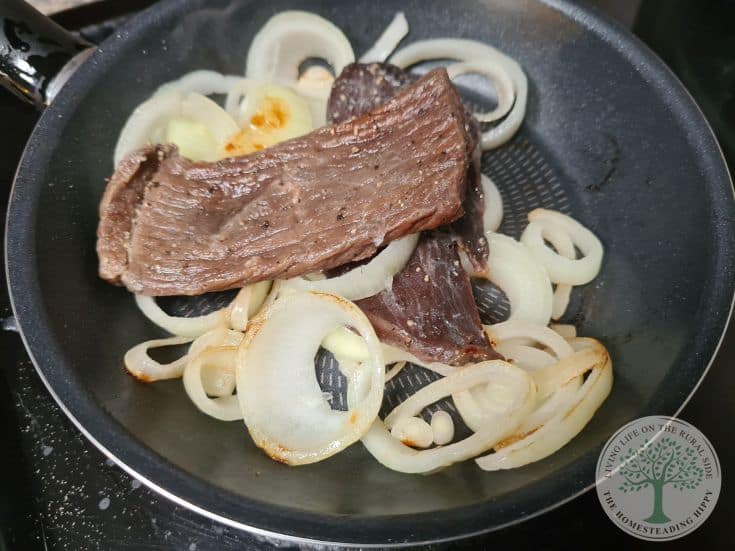
Step 6: Eat it hot with your meal or let it cool if you want to make jerky.
You can fully rehydrate it in water first, then sauté or fry it to prepare it like a standard steak.
Method #3: Using Liquids
Wine (you don’t need much, so don’t worry, there will be plenty of wine left to drink) can be used to rehydrate your jerky.
The ratio of liquid to jerky should be 1:1. The jerky should be fully submerged in it.
Jerky can be rehydrated in 10 to 30 minutes, depending on how thick and moist you want it.
It will take 10 to 15 minutes to soften the meat if you use boiling water, soup, broth, or wine.
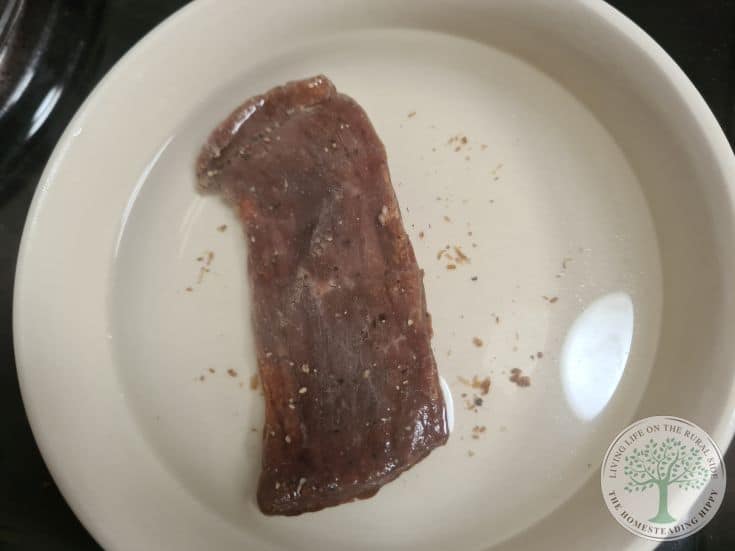
It will take 15 to 30 minutes to soften if you use cold water, soup, broth, or wine.
When you take your jerky out of the moist liquid, set it down on a dry paper towel and let the moisture on the meat’s surface evaporate.

Method #4: In the Fridge
There are two ways to rehydrate jerky in the fridge.
The first way is by using a vegetable. When jerky (or any other dehydrated meat) needs to be rehydrated, vegetables are a great source of moisture. What’s more, little to no effort is needed.
Simply:
Step 1: Seal the zip-top bag or other sealable container with the jerky.
Step 2: Add a vegetable (chopped or whole). I find that carrots, celery, or potatoes work best.
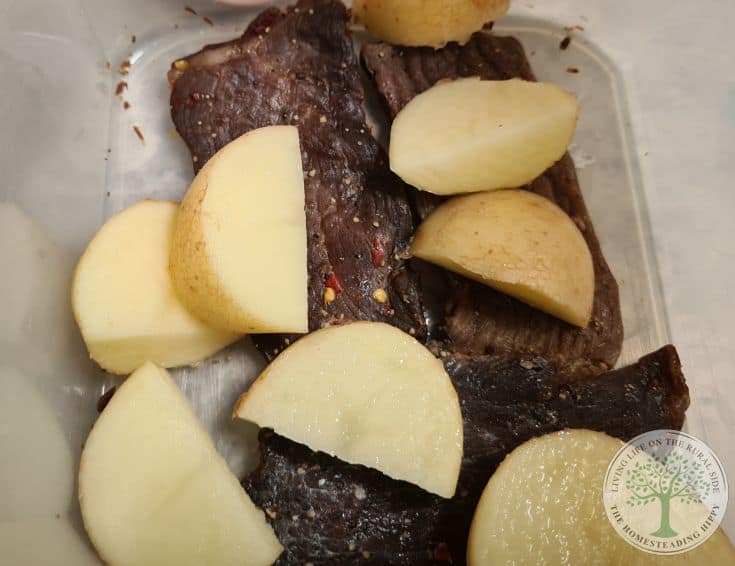
Step 3: Seal the bag or container.
Step 4: Overnight, put the bag or container in the refrigerator.
The second way is by using a damp paper towel.
Step 1: Seal the ziploc bag or other container with the jerky inside.
Step 2: Dampen two paper towels and wring out all the water.
Place the paper towel in the bag or container in step three.
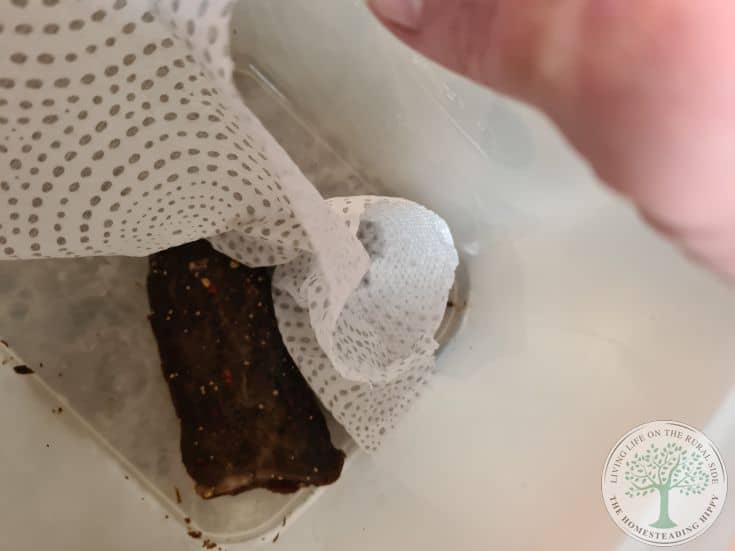
Step 4: Seal the bag or container.
Step 5: Store the package or bag in the refrigerator overnight.
It will take a while to get your jerky back, but if you’re patient, the meat will be delicious.
Method #5: With Sauce
When you dehydrate your jerky, some of the sauces you used in the marinade will help give it the flavor boost you intended.
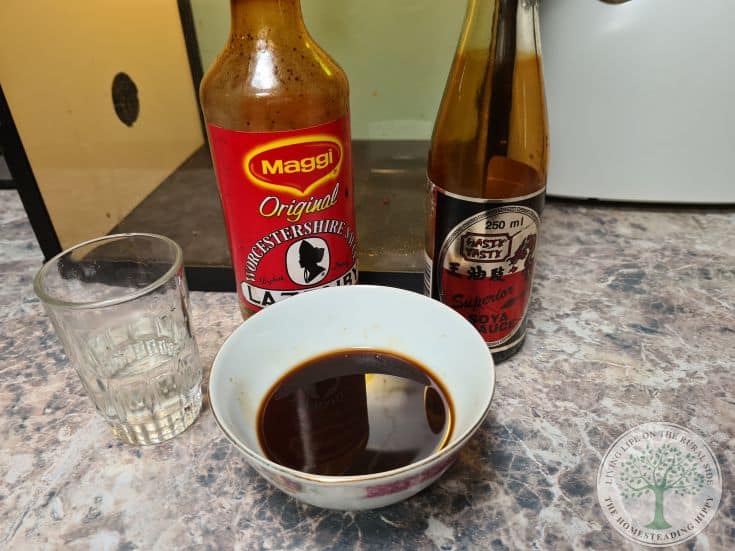
Utilize Worcestershire or soy sauce in Step 1 (you can add water to either of these if you want).
Using the marinade you used for your jerky will preserve the flavor. To help with rehydration without making the jerky too hot, you can add a little water.
Step 2: Brush the jerky with the sauce:
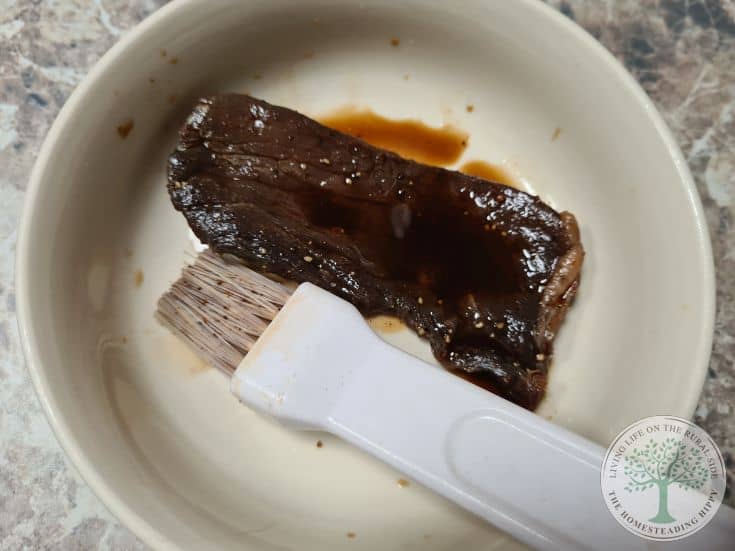
Step 3: After 20 minutes, turn the meat over and brush the sauce on both sides.
Step 4: This usually takes an hour, depending on how soft or moist you want your jerky to be.
I always carry jerky and noodles when I go hiking. They are portable, convenient, simple to make, and full of energy.
Step 1: Prepare the noodles as usual using boiling water.
Step 2: Include your jerky right away so that it cooks alongside the noodles.
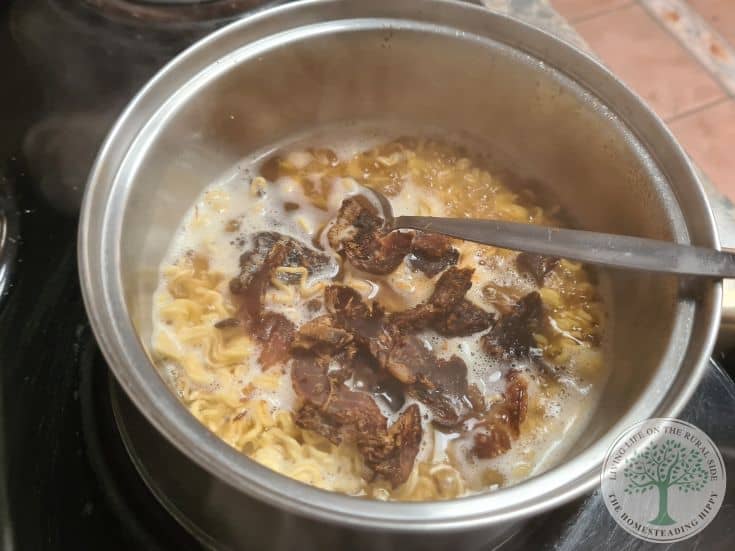
It only takes two minutes to get ready, and then you can leave.
Noodles and jerky go together whether you’re looking for a quick snack or a full hiking trail meal.
Jerky is the perfect meat source in a stew. Because stew typically takes a while to prepare, the meat comes out juicy and tender and gives your stew a fantastic flavor.
Step 1: Chop up all the vegetables for your stew.
Step 2: Chop your jerky into smaller chunks.
Step 3: Put your jerky and vegetables in a pot or slow cooker.
Step 4: Add the gravy or stock of your choice.
Step 5: Let it cook.
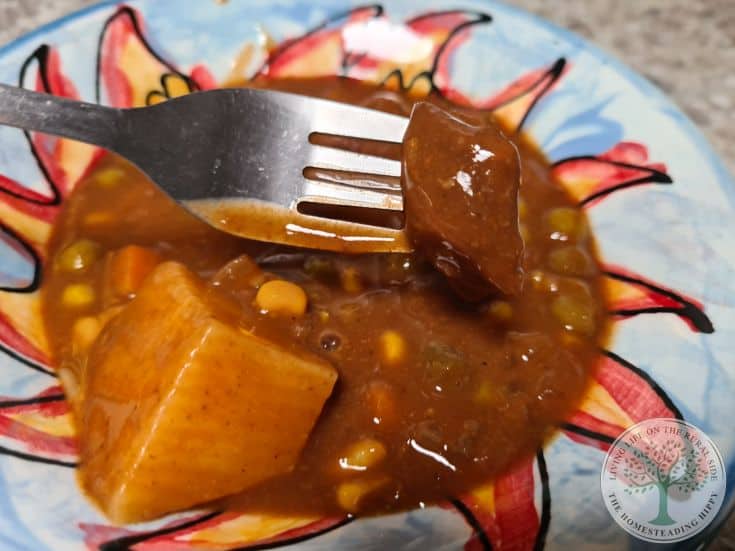
This will cook on the stove for about an hour (I always cook it on medium heat). I prefer to do my stew in my slow cooker. I make the stew in the morning, put it in the slow cooker, and turn it to low. By suppertime, the stew is ready.
The taste is decadent!
One choice is to place it in vinegar or water for ten to fifteen minutes before eating. The meat will become more pliable as a result of being rehydrated. The beef jerky can also be microwaved for 30 to 60 seconds to help make it more tender. In order to add flavor and tenderness, you can try marinating the beef jerky in a sauce or rub before cooking.
Surprisingly, jerky can actually rehydrate surprisingly well. Jerky that has been soaked in hot water will regain much of its original texture, consistency, and flavor, though it may not taste as good as fresh meat.
Although jerky may appear to be practically indestructible, it can be overcooked. Overcooked jerky will be crumbly, dry, and possibly even have a burnt flavor. Additionally, overcooked jerky will be more brittle and less flexible, making it challenging to consume.

How To Soften & Rehydrate Dry/Tough/Hard Jerky In Minutes
FAQ
Can you put moisture back into jerky?
Rehydration With Water or Broth In addition to the sauce, you can add more liquids to your beef jerky, like water or broth. Whatever you prefer, it can be vegetable, chicken, or beef broth. Your chosen liquid may be either hot or cold. In both cases, it has a similar effect.
How do you rehydrate dried beef?
How Long Does Homemade Dehydrated Beef Jerky Last? Depending on a few factors, such as how it is made, what it is made of, and how it is stored, homemade jerky can last anywhere from one week to several years. The shelf life of homemade jerky can vary greatly depending on how it was made.
